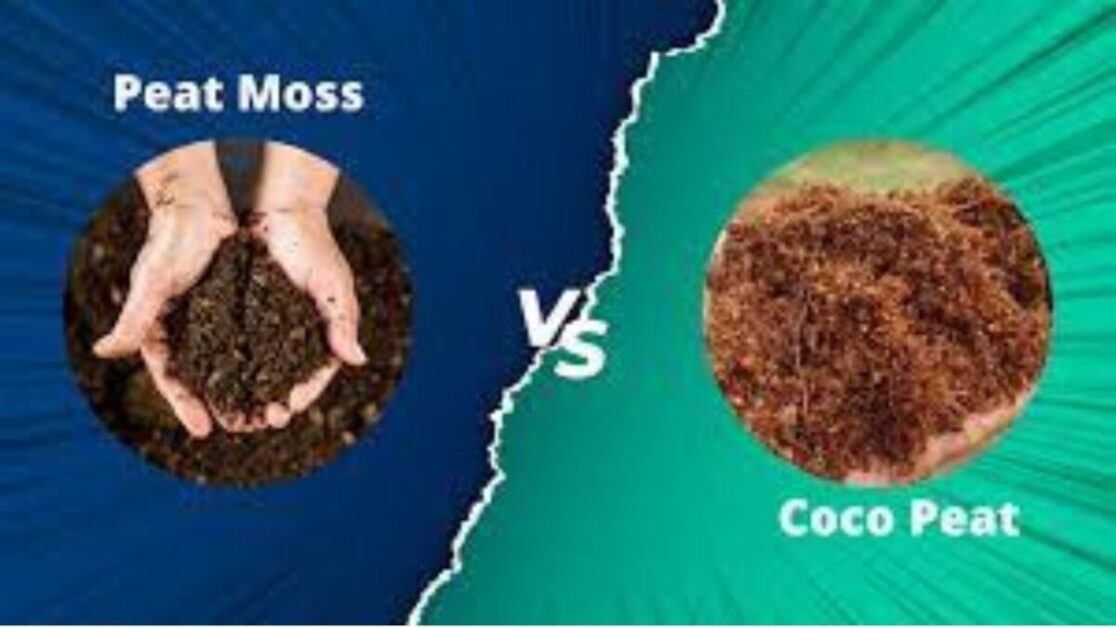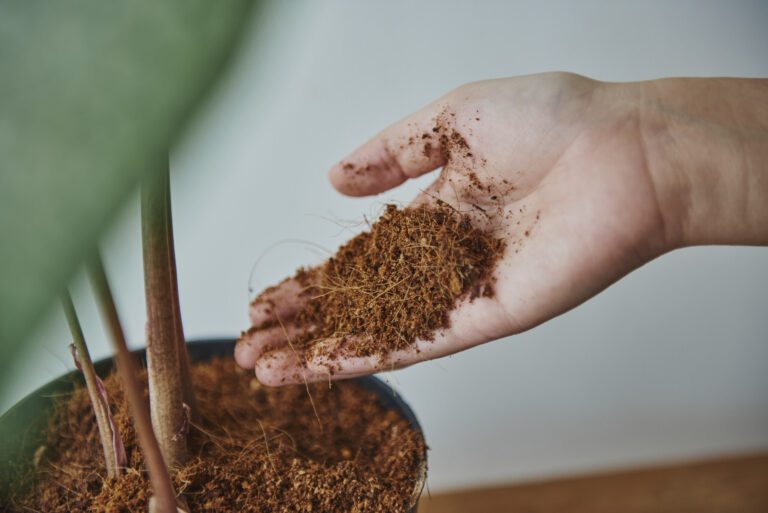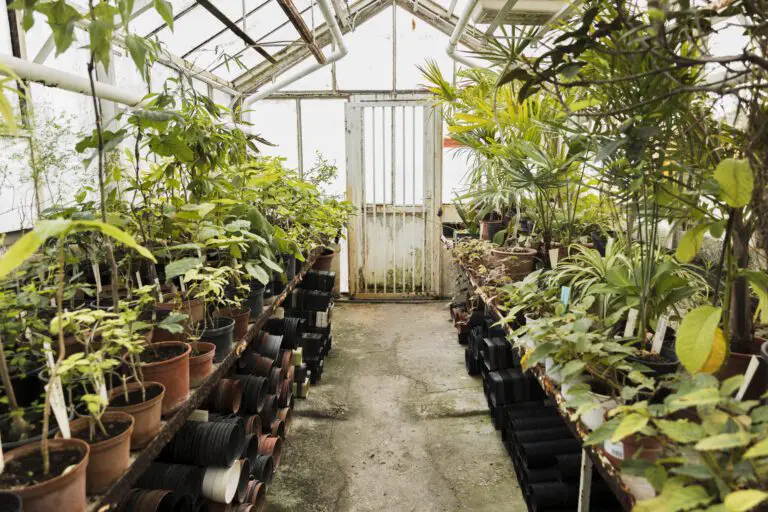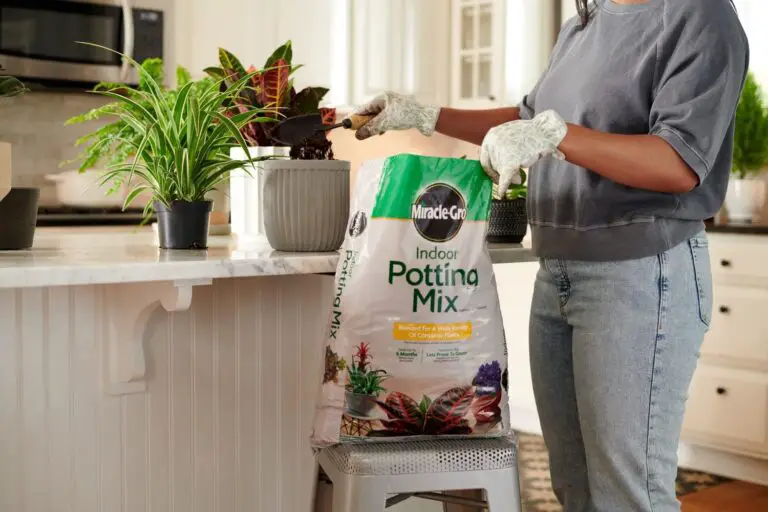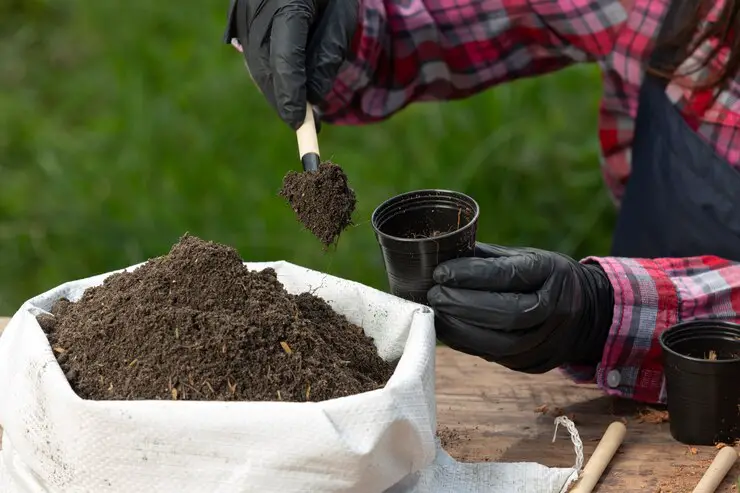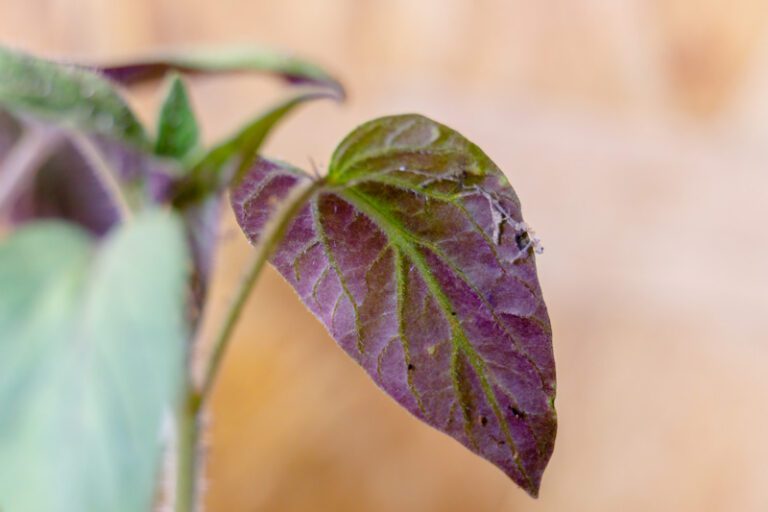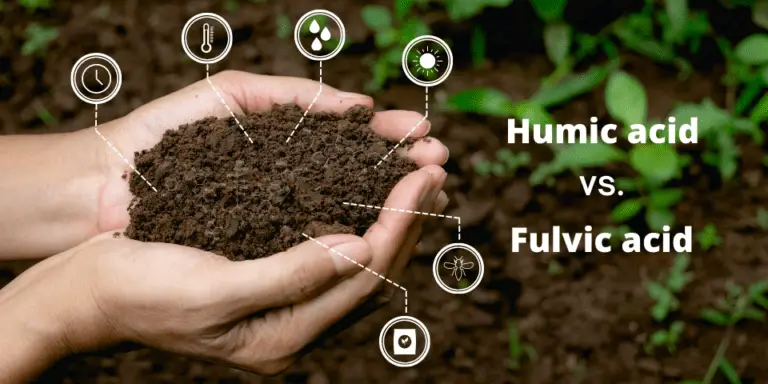Peat Showdown: Comparing Coco Peat and Peat Moss in Gardening
Table of Contents: Peat Showdown
Peat Showdown: Benefits of coco peat and peat moss in Gardening
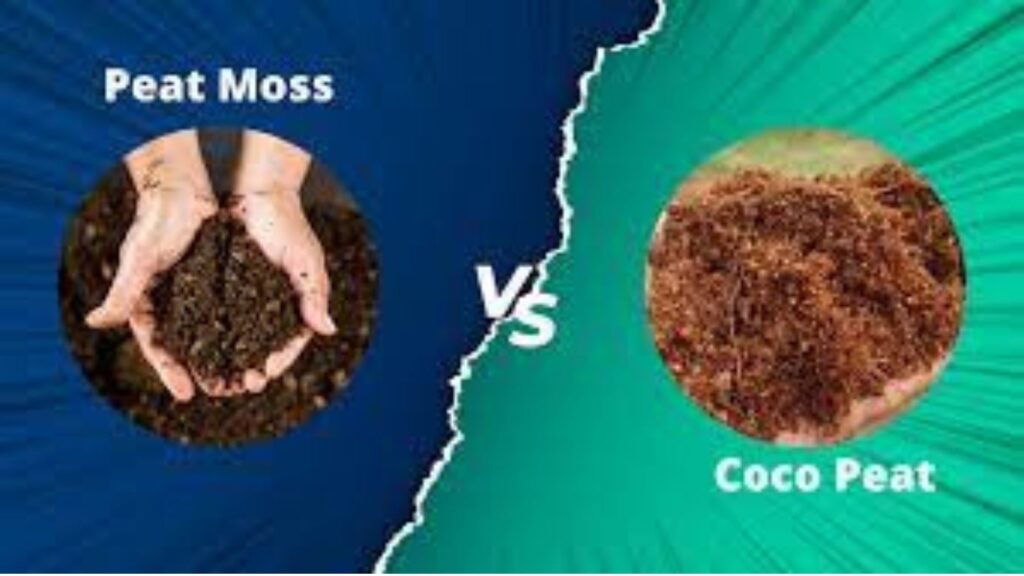
Coco peat, also known as coir pith, is a versatile and environmentally-friendly medium that offers numerous benefits for gardening enthusiasts. One of its primary advantages is its excellent water retention capability. Coco peat has been found to retain moisture significantly better than traditional soil, allowing plants to access water as needed and reducing the risk of overwatering and root rot. This is particularly beneficial for plants that require consistent moisture, such as tropical ferns and orchids.
Furthermore, coco peat possesses excellent aeration properties, promoting healthy root development. Its unique composition allows for optimal oxygen circulation within the root zone, which is vital for nutrient uptake and overall plant growth. In addition, coco peat has a neutral pH level, making it suitable for a wide range of plants, from acid-loving ones, such as blueberries, to alkaline-tolerant varieties like geraniums. Its ability to adjust the soil’s pH provides gardeners with greater flexibility when cultivating different plant species. Overall, the benefits of using coco peat in gardening extend beyond just moisture retention, making it a valuable medium for cultivating thriving plants.
• Coco peat has excellent water retention capability, reducing the risk of overwatering and root rot.
• It promotes healthy root development by providing optimal oxygen circulation within the root zone.
• Coco peat has a neutral pH level, making it suitable for a wide range of plants with different soil preferences.
• Its ability to adjust the soil’s pH provides flexibility when cultivating various plant species.
• Using coco peat in gardening enhances overall plant growth and nutrient uptake.
Benefits of coco peat and peat moss in Gardening
Peat moss, also known as sphagnum moss, is a versatile and essential component in gardening. Its numerous benefits make it a popular choice among gardening enthusiasts. Peat moss acts as a fantastic moisture retainer, ensuring that the soil remains consistently hydrated. This is particularly beneficial for plants that require constant moisture, such as ferns or certain types of orchids.
In addition to moisture retention, peat moss also aids in improving soil structure. Its lightweight and fibrous nature make it an excellent medium for promoting root growth and aeration. The loose texture of peat moss allows roots to penetrate easily, ensuring efficient nutrient uptake and overall plant health. Moreover, its acidic nature helps neutralize alkaline soils, creating an optimal pH level for a wide range of plants. These properties make peat moss an invaluable tool for enhancing soil fertility and supporting the growth of various plant species.
• Peat moss retains moisture in the soil, ensuring plants receive a consistent water supply.
• It improves soil structure by promoting root growth and aeration.
• The lightweight and fibrous nature of peat moss allows roots to penetrate easily for efficient nutrient uptake.
• Peat moss’s acidic nature helps neutralize alkaline soils, creating an optimal pH level for plant growth.
• Using peat moss enhances soil fertility and supports the growth of various plant species.
Understanding Coco Peat: Composition and Characteristics coco peat and peat moss
Coco peat, also known as coir or coconut coir, is a versatile and sustainable gardening medium that has gained popularity among gardening enthusiasts. This organic material is derived from the fibrous husk of coconuts and is widely used for its unique composition and characteristics. Composed primarily of lignin, cellulose, and hemicellulose, coco peat offers excellent water retention capabilities, allowing it to absorb and retain large amounts of moisture compared to traditional soil. Moreover, its spongy texture promotes aeration, ensuring the roots have access to the much-needed oxygen for proper growth.
One of the notable characteristics of coco peat is its ability to hold nutrients and release them gradually to plants. This not only reduces the frequency of fertilization but also prevents nutrient leaching, which can be a common issue in traditional soil-based gardening. Additionally, coco peat has a neutral pH level, which means it is not acidic and can be beneficial for plants that thrive in slightly alkaline conditions. Its lightweight nature makes it easy to handle, transport, and mix with other gardening materials, offering gardeners a convenient and versatile medium for their plants. With these advantageous composition and characteristics, coco peat proves to be an excellent option for various gardening applications.
• Coco peat is composed primarily of lignin, cellulose, and hemicellulose
• It has excellent water retention capabilities, absorbing and retaining large amounts of moisture compared to traditional soil
• The spongy texture promotes aeration, ensuring roots have access to oxygen for proper growth
• Coco peat can hold nutrients and release them gradually to plants, reducing the frequency of fertilization
• It prevents nutrient leaching that can be common in traditional soil-based gardening
• Coco peat has a neutral pH level, making it beneficial for plants that thrive in slightly alkaline conditions
• Its lightweight nature makes it easy to handle, transport, and mix with other gardening materials.
Understanding Peat Moss: Composition and Characteristics
Peat moss, also known as sphagnum moss, is a type of organic matter that forms in wetland environments over thousands of years. It is composed primarily of dead moss and other plant materials that have decomposed over time. This decomposition process occurs in the absence of oxygen, which creates the unique characteristics of peat moss.
One of the key characteristics of peat moss is its ability to retain moisture. Due to its high water holding capacity, peat moss can help to improve the moisture retention capability of soil. This is particularly beneficial for plants that require a consistently moist environment, as peat moss can help to prevent excessive drying out of the soil. In addition, peat moss has a low density, which allows it to hold a significant amount of water without becoming waterlogged. This characteristic makes it an ideal choice for gardening in areas with poor drainage.
Peat moss also has a high acidic pH level, typically ranging from 3.5 to 4.5. This acidity can be beneficial for certain plants that prefer acidic soil conditions, such as blueberries and azaleas. However, it is worth noting that if used in excess, peat moss can potentially lower the pH of the soil too much, which may negatively impact the growth of some plants. It is important to consider the specific pH requirements of the plants you intend to grow and adjust the use of peat moss accordingly.
Overall, peat moss is a valuable addition to any gardening endeavor due to its moisture retention capabilities and acidic pH level. It is particularly suited for plants that require consistent moisture and thrive in acidic soil conditions. However, it is important to use peat moss in moderation and take into account the specific needs of your plants to ensure a healthy and thriving garden.
• Peat moss, also known as sphagnum moss, is composed of decomposed plant materials that form in wetland environments over thousands of years.
• It has the unique ability to retain moisture and improve soil’s moisture retention capability.
• Peat moss has a low density which allows it to hold water without becoming waterlogged, making it ideal for areas with poor drainage.
• The pH level of peat moss is high acidic, ranging from 3.5 to 4.5.
• This acidity can benefit plants that prefer acidic soil conditions like blueberries and azaleas.
• However, excessive use of peat moss can lower the pH too much and negatively impact plant growth.
• It is important to consider the specific pH requirements of your plants before using peat moss excessively.
• Overall, peat moss is valuable for gardening due to its moisture retention capabilities and acidic pH level but should be used in moderation considering the needs of your plants.
A Comparison of Moisture Retention: Coco Peat and Peat Moss
Coco peat and peat moss are both popular choices for gardeners seeking to improve moisture retention in their soil. Both materials have unique properties that make them effective in retaining water, but they differ in composition and characteristics.
Coco peat, also known as coir, is made from the fibrous husk of coconuts. It has an impressive ability to retain moisture, with the capacity to hold up to 10 times its weight in water. This makes it an excellent choice for plants that require consistent hydration. Additionally, coco peat provides aeration to the roots, allowing for better nutrient absorption and overall plant health.
On the other hand, peat moss is derived from decomposed sphagnum moss found in bogs. It is renowned for its high water-holding capacity and ability to retain moisture in the soil. Peat moss has the advantage of retaining water even when it dries out, making it ideal for drought-prone areas. It also helps improve soil structure by preventing compaction, enabling better root growth.
Both coco peat and peat moss have their unique benefits when it comes to moisture retention. In the next section, we will delve deeper into their nutrient retention capabilities, providing a comprehensive comparison between the two materials. Through a better understanding of their characteristics, gardeners can make an informed decision on which option suits their specific gardening needs.
• Coco peat, also known as coir, is made from the fibrous husk of coconuts and can hold up to 10 times its weight in water.
• Coco peat provides aeration to roots, allowing for better nutrient absorption and overall plant health.
• Peat moss is derived from decomposed sphagnum moss found in bogs and has a high water-holding capacity.
• Peat moss retains water even when it dries out, making it ideal for drought-prone areas.
• Peat moss helps improve soil structure by preventing compaction and enabling better root growth.
Examining Nutrient Retention: Coco Peat and Peat Moss
Coco peat and peat moss are both popular choices for gardeners looking to enhance nutrient retention in their soils. Examining the nutrient retention capabilities of these two materials can help gardeners make informed decisions about which one is best suited for their gardening needs.
When it comes to nutrient retention, coco peat offers some distinct advantages. Coco peat, also known as coir, is derived from the fibrous husks of coconuts. One of its notable characteristics is its ability to hold onto nutrients for longer periods of time. This is due to its high cation exchange capacity (CEC), which allows it to attract and hold onto positively charged nutrients like potassium, calcium, and magnesium. As a result, coco peat can provide a steady and prolonged release of essential nutrients to plants, promoting healthy growth and development.
In contrast, peat moss also exhibits good nutrient retention properties, although not as pronounced as coco peat. Peat moss is formed from partially decomposed sphagnum moss, and it is well known for its ability to hold water and nutrients. Its high water-holding capacity contributes to its ability to retain nutrients, preventing them from being leached out of the soil. Peat moss’s acidic nature also plays a role in nutrient retention, as it creates an environment that helps preserve and release essential elements to plants. While it may not have the same high CEC as coco peat, peat moss still offers a reliable means of nutrient retention in gardening.
In summary, both coco peat and peat moss exhibit valuable nutrient retention properties, albeit with some differences. Gardeners should consider the specific needs of their plants and the overall growing environment when choosing between these two options. Further exploration into their individual nutrient profiles, as well as other factors like cost-effectiveness and environmental impact, will provide a more comprehensive perspective on the best choice for nutrient retention in gardening.
• Coco peat has a high cation exchange capacity (CEC), allowing it to hold onto positively charged nutrients like potassium, calcium, and magnesium for longer periods of time.
• Coco peat provides a steady and prolonged release of essential nutrients to plants, promoting healthy growth and development.
• Peat moss exhibits good nutrient retention properties, although not as pronounced as coco peat.
• Peat moss’s high water-holding capacity contributes to its ability to retain nutrients in the soil.
• Peat moss’s acidic nature creates an environment that helps preserve and release essential elements to plants.
• Gardeners should consider the specific needs of their plants and the overall growing environment when choosing between coco peat and peat moss for nutrient retention.
Coco Peat and Peat Moss: pH Levels and Soil Acidity
Coco Peat and Peat Moss: pH Levels and Soil Acidity
Maintaining the proper pH levels and soil acidity is crucial for the successful growth of plants. Coco peat, also known as coir pith, has a slightly alkaline pH level, typically ranging from 5.5 to 7.0. This makes it suitable for a wide range of plants, as most varieties prefer slightly acidic to neutral soil conditions. With the pH level of coco peat falling within this desired range, it can help create an ideal environment for optimum plant growth.
On the other hand, peat moss tends to be more acidic, with a pH level ranging from 3.0 to 4.5. This acidity makes it particularly beneficial for acid-loving plants, such as blueberries, azaleas, and rhododendrons. By incorporating peat moss into the soil, gardeners can help acidify the environment, providing the necessary conditions for these plants to thrive.
In summary, coco peat offers a more neutral pH level, making it suitable for a wide variety of plants, while peat moss provides higher acidity, benefiting acid-loving species. Choosing between the two will depend on the specific needs of your garden and the plants you intend to grow. In the following sections, we will delve deeper into the roles of coco peat and peat moss in enhancing soil structure and discuss their sustainability and environmental impact.
• Coco peat, also known as coir pith, has a slightly alkaline pH level ranging from 5.5 to 7.0.
• Most plants prefer slightly acidic to neutral soil conditions, making coco peat suitable for a wide range of plants.
• The pH level of coco peat falls within the desired range for optimum plant growth.
• Peat moss tends to be more acidic, with a pH level ranging from 3.0 to 4.5.
• Acid-loving plants such as blueberries, azaleas, and rhododendrons benefit from the acidity of peat moss.
• Incorporating peat moss into the soil helps acidify the environment and provides necessary conditions for these plants to thrive.
• Choosing between coco peat and peat moss depends on your garden’s specific needs and the plants you intend to grow.
In the following sections:
– We will discuss how coco peat enhances soil structure
– We will explore how using peat moss affects sustainability and environmental impact
The Role of coco peat and peat moss in Improving Soil Structure
Coco peat, also known as coir peat or coir dust, plays a crucial role in improving soil structure in gardening. This organic material, derived from the husk of coconuts, possesses unique qualities that make it an excellent soil amendment. One of its primary benefits is its ability to enhance soil aeration. Coco peat has excellent porosity and water-holding capacity, allowing for improved air circulation within the soil. This, in turn, promotes the growth of healthy plant roots and prevents waterlogging, which can lead to root rot and other issues in plants.
In addition to its aeration properties, coco peat also helps in enhancing soil water retention. Due to its sponge-like texture, it can hold water up to 10 times its weight. This ensures that plants have access to adequate moisture even during dry periods, reducing the need for frequent watering. Moreover, its water-holding capacity reduces wastage caused by runoff, ensuring efficient utilization of water resources. By providing a balanced moisture level, coco peat creates optimal conditions for plant growth and development.
By improving soil aeration and water retention, coco peat indirectly contributes to the improvement of soil structure. It creates a more friable and well-draining soil that allows the movement of nutrients, air, and water, ultimately supporting the growth of strong and healthy plants. Its ability to maintain a favorable soil environment makes it a valuable addition to various gardening practices, ranging from traditional gardening beds to hydroponic systems. Whether you’re growing vegetables, ornamental plants, or even hydroponic crops, incorporating coco peat into your gardening routine can promote optimal soil structure for thriving plant growth.
• Coco peat enhances soil aeration by improving air circulation within the soil.
• It prevents waterlogging and root rot by allowing excess water to drain effectively.
• Coco peat has excellent water-holding capacity, holding up to 10 times its weight in water.
• This ensures plants have access to adequate moisture even during dry periods.
• Reduced need for frequent watering conserves water resources and reduces wastage caused by runoff.
• Coco peat creates optimal conditions for plant growth and development by providing balanced moisture levels.
• It improves soil structure by creating a more friable and well-draining soil.
• The movement of nutrients, air, and water is facilitated in soils amended with coco peat.
• Incorporating coco peat into gardening practices promotes thriving plant growth in various settings such as traditional beds or hydroponic systems.
The Role of Peat Moss in Enhancing Soil Aeration
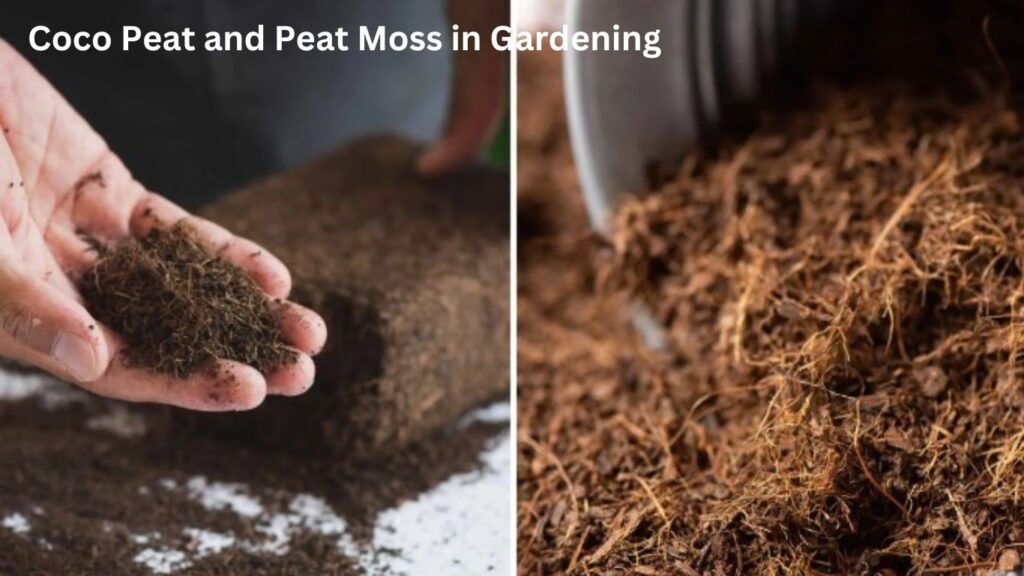
Peat moss, with its unique characteristics, plays a crucial role in enhancing soil aeration, which is vital for healthy plant growth. One of the key properties of peat moss is its ability to improve soil structure by promoting better air circulation. Its fibrous composition allows for increased pore spaces in the soil, facilitating the exchange of gases between the roots and the surrounding environment.
Moreover, peat moss possesses excellent water-retention capabilities while still maintaining porosity. This means that it can hold moisture within its structure without becoming waterlogged, creating an optimal environment for root respiration. By maintaining an ideal balance of air and water in the soil, peat moss ensures that plant roots have access to sufficient oxygen for proper metabolic functioning.
The unique properties of peat moss make it a valuable addition to soil, especially in conditions where aeration is poor. Its ability to improve soil structure and facilitate air movement creates an environment where roots can thrive. With enhanced soil aeration, plants can absorb nutrients more efficiently, resulting in healthier growth and higher yields. Gardening enthusiasts can benefit greatly from incorporating peat moss into their soil management practices to promote optimal aeration for their plants.
• Peat moss improves soil structure by promoting better air circulation
• The fibrous composition of peat moss increases pore spaces in the soil, allowing for gas exchange between roots and the environment
• Peat moss has excellent water-retention capabilities while maintaining porosity, creating an ideal environment for root respiration
• By balancing air and water in the soil, peat moss ensures sufficient oxygen for proper metabolic functioning of plant roots
• Poorly aerated soils can benefit from the addition of peat moss to improve soil structure and facilitate air movement
• Enhanced soil aeration leads to more efficient nutrient absorption by plants, resulting in healthier growth and higher yields
• Incorporating peat moss into soil management practices is beneficial for gardening enthusiasts seeking optimal aeration for their plants.
Coco Peat and Peat Moss: Sustainability and Environmental Impact
Coco Peat: Sustainability and Environmental Impact
Coco peat, also known as coir pith, is a byproduct of the coconut industry and is widely used in gardening due to its excellent water retention capabilities. From a sustainability standpoint, coco peat holds several advantages. It is an organic and renewable resource, as it is derived from the husk of coconuts, which are commonly found in tropical regions. The production of coco peat creates value from what was once considered a waste product, thereby reducing waste and promoting resource efficiency.
Furthermore, the extraction and processing of coco peat have minimal environmental impact. Unlike peat moss, which is typically harvested from sensitive peatlands, the production of coco peat does not involve the depletion or destruction of natural habitats. Additionally, coco peat is pH-neutral and does not contribute to soil acidification, making it a more environmentally friendly choice compared to peat moss. Overall, incorporating coco peat into gardening practices can contribute to sustainable land management and support the conservation of natural ecosystems.
• Coco peat is an organic and renewable resource derived from coconut husks.
• Production of coco peat reduces waste and promotes resource efficiency.
• Extraction and processing of coco peat have minimal environmental impact.
• Unlike peat moss, coco peat does not involve the depletion or destruction of natural habitats.
• Coco peat is pH-neutral and does not contribute to soil acidification.
Coco Peat vs Peat Moss: Which is More Cost-Effective?
Coco peat and peat moss both offer distinct benefits in gardening, but when it comes to cost-effectiveness, one may have an edge over the other. Let’s explore the financial aspect of using coco peat versus peat moss in your garden.
When it comes to purchasing these soil amendments, coco peat tends to be more cost-effective than peat moss. Coco peat is made from the husk of coconuts, which is a byproduct of the coconut industry. As such, it is readily available and relatively inexpensive, especially when compared to peat moss.
Peat moss, on the other hand, is a finite resource that is harvested from peat bogs. The extraction process and transportation costs associated with peat moss can contribute to a higher price tag. Additionally, peat moss takes significantly longer to form in nature, making its availability limited and its cost higher.
Considering the cost-effectiveness of coco peat versus peat moss, gardeners on a budget may find coco peat to be a more affordable option. However, it’s important to note that cost should not be the only factor when making a decision. Factors such as the specific needs of your plants, your gardening goals, and the long-term sustainability of the soil amendment should also be taken into consideration.
• Coco peat is made from the husk of coconuts, a byproduct of the coconut industry, making it readily available and relatively inexpensive.
• Peat moss is harvested from peat bogs, which is a finite resource. The extraction process and transportation costs associated with peat moss can contribute to a higher price tag.
• Peat moss takes significantly longer to form in nature, making its availability limited and its cost higher.
• Gardeners on a budget may find coco peat to be a more affordable option compared to peat moss.
• However, factors such as the specific needs of your plants, gardening goals, and long-term sustainability should also be considered when choosing between coco peat and peat moss.
Coco Peat and Peat Moss: Application Methods and Considerations
Coco Peat Application Methods and Considerations
When it comes to using coco peat in gardening, there are a few important considerations to keep in mind. First and foremost, coco peat should always be thoroughly soaked and rehydrated before use. This is because coco peat typically comes in a dry, compressed form and needs to absorb water in order to expand and become usable. By soaking the coco peat in water for several hours or overnight, you can ensure that it becomes moist and fluffy, ready to be incorporated into your gardening projects.
Another important aspect to consider when using coco peat is its pH level. Coco peat tends to be slightly acidic, with a pH ranging between 5.5 and 6.5. This makes it suitable for a wide variety of plants, but it’s important to monitor the pH of your soil to ensure that it remains within the optimal range for your specific plants. Adding lime or other pH adjusters may be necessary to create the ideal growing conditions.
Peat Moss Application Methods and Considerations
Peat moss is widely used in gardening due to its ability to improve soil structure and retain moisture. When applying peat moss to your garden, it is important to blend it thoroughly with your existing soil. This will help improve the soil’s texture and increase its water-holding capacity.
One consideration when using peat moss is its limited nutrient content. While peat moss can improve soil fertility over time by providing a favorable environment for beneficial microbial activity, it does not contain significant amounts of nutrients. Therefore, it’s important to supplement with organic fertilizers or other nutrient-rich amendments to ensure that your plants receive the necessary nutrients for optimal growth. Additionally, due to its slow decomposition rate, it’s recommended to incorporate peat moss into your soil well in advance of planting to allow it to break down and enrich the soil.
• Coco peat should be thoroughly soaked and rehydrated before use
• Soaking coco peat in water for several hours or overnight ensures it becomes moist and fluffy
• Coco peat has a slightly acidic pH ranging between 5.5 and 6.5
• Monitor the pH of your soil to ensure it remains within the optimal range for your plants
• Adding lime or other pH adjusters may be necessary to create ideal growing conditions
• Blend peat moss thoroughly with existing soil when applying to improve soil structure and retain moisture
• Peat moss has limited nutrient content, so supplement with organic fertilizers or nutrient-rich amendments
• Peat moss improves soil fertility over time by providing a favorable environment for beneficial microbial activity
• Incorporate peat moss into the soil well in advance of planting due to its slow decomposition rate
Coco Peat and Peat Moss: Suitability for Different Types of Plants
When it comes to choosing the right growing medium for different types of plants, both coco peat and peat moss offer unique advantages. Coco peat, derived from coconut husks, is an excellent option for plants that require a well-draining medium. Its high water-holding capacity ensures adequate moisture levels, making it suitable for plants like succulents, orchids, and herbs that prefer drier conditions. The fibrous structure of coco peat also promotes healthy root growth, providing an ideal environment for seedlings and young plants to thrive.
On the other hand, peat moss is a popular choice for plants that thrive in acidic conditions. Its low pH level makes it suitable for acid-loving plants such as blueberries, azaleas, and rhododendrons. Peat moss also has excellent water retention capabilities, ensuring a consistent moisture supply for moisture-loving plants like ferns and bog plants. Additionally, its ability to improve soil structure and aeration makes it suitable for a wide range of plants, including vegetables, flowers, and shrubs.
While both coco peat and peat moss have their unique suitability for different plants, it’s important to consider the specific needs of your plants before making a decision. Factors such as water requirements, pH preferences, and root development should be taken into account to ensure optimal growth and yield. Consulting with gardening experts or conducting research on specific plant requirements will help you make an informed choice that best suits your gardening needs.
• Coco peat is suitable for plants that require a well-draining medium
• It has high water-holding capacity, making it ideal for succulents, orchids, and herbs
• The fibrous structure of coco peat promotes healthy root growth
• Peat moss is suitable for acid-loving plants due to its low pH level
• Acidic plants like blueberries, azaleas, and rhododendrons thrive in peat moss
• Peat moss has excellent water retention capabilities for moisture-loving plants like ferns and bog plants
• Peat moss improves soil structure and aeration, making it suitable for vegetables, flowers, and shrubs
• Consider the specific needs of your plants before choosing between coco peat and peat moss
• Factors such as water requirements, pH preferences, and root development should be considered
• Consulting gardening experts or conducting research on plant requirements can help make an informed choice.
Potential Drawbacks of Coco Peat in Gardening
Potential Drawbacks of Coco Peat in Gardening
While coco peat offers numerous benefits in gardening, it is important to be aware of its potential drawbacks as well. One significant drawback is its high salt content. Coco peat is derived from coconut husks, which are naturally rich in salts. If not properly processed or rinsed, these salts can accumulate in the coco peat and negatively affect plant growth. Excessive salt levels can hinder nutrient absorption and cause salt burn, leading to stunted growth and yellowing of leaves.
Another drawback of coco peat is its poor drainage properties. Although coco peat has excellent water-holding capacity, it tends to retain water for extended periods, which can result in waterlogged conditions for plant roots. This can potentially lead to root rot and other fungal diseases. Gardeners using coco peat should be cautious and ensure proper watering practices, such as allowing sufficient time for the media to dry out between watering sessions. Additionally, adding perlite or other amendments that enhance drainage can help mitigate this issue.
Despite these drawbacks, coco peat can still be a valuable addition to a gardener’s arsenal when used properly. By understanding its limitations and implementing appropriate measures, it is possible to harness its benefits while minimizing any potential negative effects.
• High salt content: Coco peat derived from coconut husks can contain high levels of salts, which if not properly processed or rinsed, can accumulate and hinder plant growth.
• Excessive salt levels can lead to nutrient absorption issues and result in stunted growth and yellowing leaves.
• Poor drainage properties: Coco peat retains water for extended periods, potentially causing waterlogged conditions and leading to root rot and fungal diseases.
• Proper watering practices, such as allowing the media to dry out between sessions, are crucial when using coco peat.
• Adding perlite or other amendments that enhance drainage can help mitigate the poor drainage issue.
• Despite these drawbacks, when used correctly with proper measures in place, coco peat can still be a valuable addition to gardening.
Potential Drawbacks of Peat Moss in Gardening
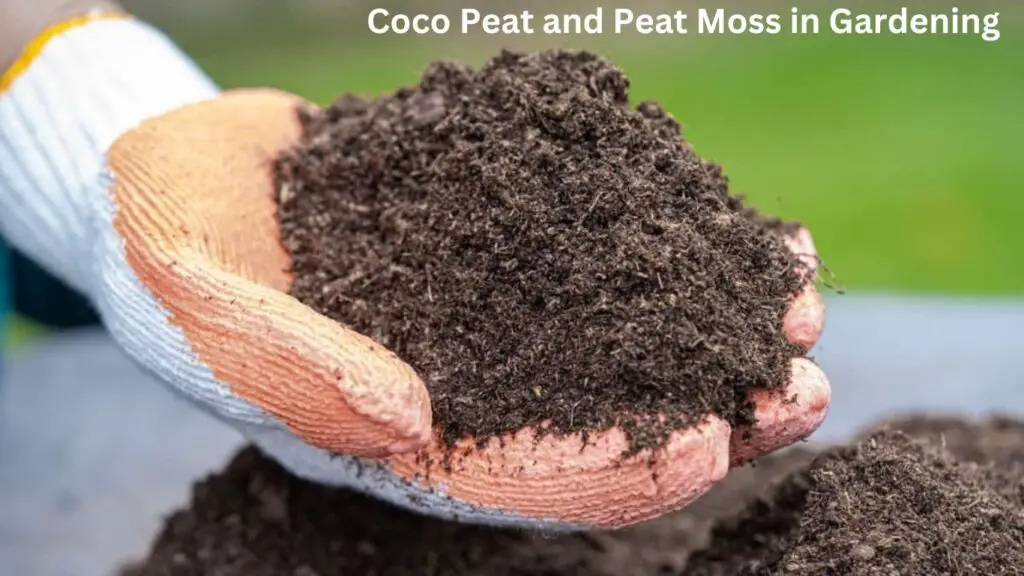
Potential Drawbacks of Peat Moss in Gardening
1. Limited Water Holding Capacity: One of the potential drawbacks of using peat moss in gardening is its limited water holding capacity. Peat moss has a tendency to repel water initially due to its high water-holding capacity, which can lead to inadequate hydration for plants, especially in dry climates or during hot weather. This means that gardeners might need to water their plants more frequently to prevent them from drying out.
2. High Acidity Levels: Peat moss has naturally high acidity levels, which can affect the pH balance of the soil. While some plants thrive in acidic conditions, many others prefer a more neutral or alkaline environment. If not properly managed, the use of peat moss can create imbalances in the soil’s pH levels, making it less suitable for certain plant species. Gardeners using peat moss should regularly test the pH levels of their soil to ensure it is within the desired range for their specific plants.
While peat moss offers several benefits for gardening, it is important to be aware of its limitations. Gardeners should consider these potential drawbacks and take appropriate measures to address them, such as incorporating other organic matter to enhance water retention or adjusting soil pH levels as needed. By understanding and managing these drawbacks, gardeners can make informed decisions about the use of peat moss in their gardening practices.
• Limited Water Holding Capacity: Peat moss initially repels water due to its high water-holding capacity, leading to inadequate hydration for plants in dry climates or hot weather.
• High Acidity Levels: Peat moss has naturally high acidity levels, which can affect the pH balance of the soil and make it less suitable for certain plant species.
• Regular Testing Required: Gardeners using peat moss should regularly test the pH levels of their soil to ensure it is within the desired range for their specific plants.
• Additional Measures Needed: To address these drawbacks, gardeners can incorporate other organic matter to enhance water retention or adjust soil pH levels as needed.
Here’s a table comparing Coco Peat and Peat Moss in gardening:
Table: Comparing Coco Peat and Peat Moss in Gardening
| Characteristics | Coco Peat | Peat Moss |
|---|---|---|
| Source | Coconut husks | Decomposed sphagnum moss |
| Sustainability | Renewable | Slow to renew, concerns about sustainability due to extraction rate |
| Acidity (pH) | Slightly acidic (5.5-6.5) | Acidic (pH 3.0-4.0) |
| Structure | Fine texture, retains water well | Fibrous structure, retains water well but may compact over time |
| Aeration | Good | Good, but may require additional aeration in the long term |
| Drainage | Good | Good |
| Water Retention | High | High |
| Nutrient Content | Low | Low |
| Sterility | Generally sterile | Sterile |
| Rehydration | Rehydrates easily | Rehydrates easily |
| pH Buffering Capacity | Limited | High |
| Renewability | Yes | Slow to renew |
| Environmental Impact | Generally considered more sustainable | Concerns about peat bog ecosystems and biodiversity |
| Common Uses | Seed starting, container gardening, hydroponics | Soil amendment, potting mixes, seed starting |
These characteristics provide a general overview of the differences between Coco Peat and Peat Moss. The choice between the two depends on factors such as the specific needs of plants, environmental considerations, and personal preferences. It’s also worth noting that some gardeners may choose to use a combination of both to create a well-balanced growing medium.
Exploring Alternatives to Coco Peat and Peat Moss
While coco peat and peat moss have long been popular choices for enhancing soil quality in gardening, it is always beneficial to explore alternative options. One such alternative is compost, which is rich in organic matter and can greatly improve soil fertility. Compost is created through the decomposition of organic waste, such as kitchen scraps, yard trimmings, and fallen leaves. It not only adds vital nutrients to the soil but also improves its structure and water-holding capacity. Additionally, compost is environmentally friendly, as it reduces the amount of waste that goes into landfills.
Another alternative worth considering is vermiculite, a mineral that is often used as a soil amendment. Vermiculite has excellent water-holding capabilities and can greatly improve moisture retention in sandy or well-draining soils. It also helps in loosening compacted soils and improves aeration, promoting healthier root growth. Additionally, vermiculite is lightweight, sterile, and free from harmful pathogens, making it a safe choice for gardening. By exploring alternatives to coco peat and peat moss, you can find options that suit your gardening needs while promoting sustainable practices.
• Compost is a rich source of organic matter that improves soil fertility
• It adds vital nutrients to the soil and enhances its structure and water-holding capacity
• Compost is created through the decomposition of kitchen scraps, yard trimmings, and fallen leaves
• Using compost reduces waste going into landfills, making it an environmentally friendly option
• Vermiculite is a mineral that can be used as a soil amendment
• It has excellent water-holding capabilities, improving moisture retention in sandy or well-draining soils
• Vermiculite helps loosen compacted soils and promotes healthier root growth by improving aeration
• It is lightweight, sterile, and free from harmful pathogens, ensuring safe gardening practices
By exploring alternatives to coco peat and peat moss such as compost and vermiculite, gardeners have options that suit their specific needs while also promoting sustainable practices.
Conclusion: Making the Right Choice for Your Garden’s Needs
In conclusion, when it comes to choosing between coco peat and peat moss for your garden, it is important to consider several factors. Both coco peat and peat moss have their own unique benefits and characteristics that can enhance your gardening experience. Coco peat offers excellent moisture retention and nutrient retention capabilities, making it ideal for plants that require a well-hydrated environment. On the other hand, peat moss excels at improving soil structure and enhancing soil aeration, crucial for plants that thrive in well-drained conditions.
Additionally, sustainability and environmental impact should be taken into account. While both materials are derived from natural sources, coco peat is considered more sustainable due to its renewable nature and minimal impact on ecosystems. Peat moss, on the other hand, is harvested from peat bogs, which are non-renewable resources and play a vital role in carbon storage and biodiversity conservation.
Ultimately, the choice between coco peat and peat moss should be based on your specific gardening needs and the requirements of your plants. Consider factors such as moisture retention, nutrient retention, soil structure, aeration, sustainability, and environmental impact. By making an informed decision, you can create an optimal growing environment for your plants and achieve the best results in your garden.
• Coco peat offers excellent moisture retention and nutrient retention capabilities.
• Peat moss excels at improving soil structure and enhancing soil aeration.
• Coco peat is considered more sustainable due to its renewable nature and minimal impact on ecosystems.
• Peat moss is harvested from non-renewable peat bogs, which play a vital role in carbon storage and biodiversity conservation.
• Consider factors such as moisture retention, nutrient retention, soil structure, aeration, sustainability, and environmental impact when choosing between coco peat and peat moss.
What is the difference between coco peat and peat moss?
Coco peat is derived from coconut husks, while peat moss is derived from decomposed sphagnum moss. They have different compositions and characteristics.
Which one has better moisture retention, coco peat and peat moss?
Both coco peat and peat moss have excellent moisture retention properties, but coco peat tends to retain moisture for a longer period of time.
How do coco peat and peat moss differ in terms of nutrient retention?
Coco peat has a higher cation exchange capacity, allowing it to retain and release nutrients effectively. Peat moss, on the other hand, has a lower nutrient retention capacity.
What are the pH levels and soil acidity of coco peat and peat moss?
Coco peat has a slightly acidic pH level, while peat moss is more acidic. Both can be used to lower soil acidity.
How does coco peat and peat moss improve soil structure?
Coco peat improves soil structure by creating air pockets and enhancing water drainage. It also prevents soil compaction.
What is the role of peat moss in enhancing soil aeration?
Peat moss improves soil aeration by loosening compacted soil, allowing roots to breathe and facilitating nutrient uptake.
Which one, coco peat and peat moss, is more sustainable and environmentally friendly?
Coco peat is considered more sustainable and environmentally friendly as it is a byproduct of coconut production, while peat moss is obtained from natural peat bogs, which are non-renewable resources.
Which one is more cost-effective, coco peat and peat moss?
Coco peat is generally more cost-effective compared to peat moss, as it is widely available and can be sourced from agricultural waste.
How should coco peat and peat moss be applied in gardening?
Coco peat and peat moss can be used as soil amendments, potting mediums, or top dressings. They should be mixed with other soil components for best results.
Are coco peat and peat moss suitable for all types of plants?
Coco peat and peat moss are suitable for a wide range of plants, but certain plants with specific soil requirements may benefit more from one over the other. It is important to consider the needs of the specific plants being grown.
What are the potential drawbacks of using coco peat and peat moss in gardening?
Coco peat may have a high salt content, which can affect plant growth if not properly rinsed. It may also compact over time, reducing its effectiveness as a soil amendment.
What are the potential drawbacks of using coco peat and peat moss in gardening?
Peat moss is a non-renewable resource and its extraction can contribute to environmental degradation. It may also contain high levels of bacteria and fungi, potentially leading to plant diseases.
Are there any alternatives to coco peat and peat moss?
Yes, there are alternative soil amendments such as compost, vermiculite, perlite, and coir fiber that can be used in gardening.
How can I choose the right soil amendment for my garden’s needs?
Consider factors such as the specific requirements of your plants, availability of the soil amendment, cost-effectiveness, and environmental impact to make the right choice for your garden’s needs.

